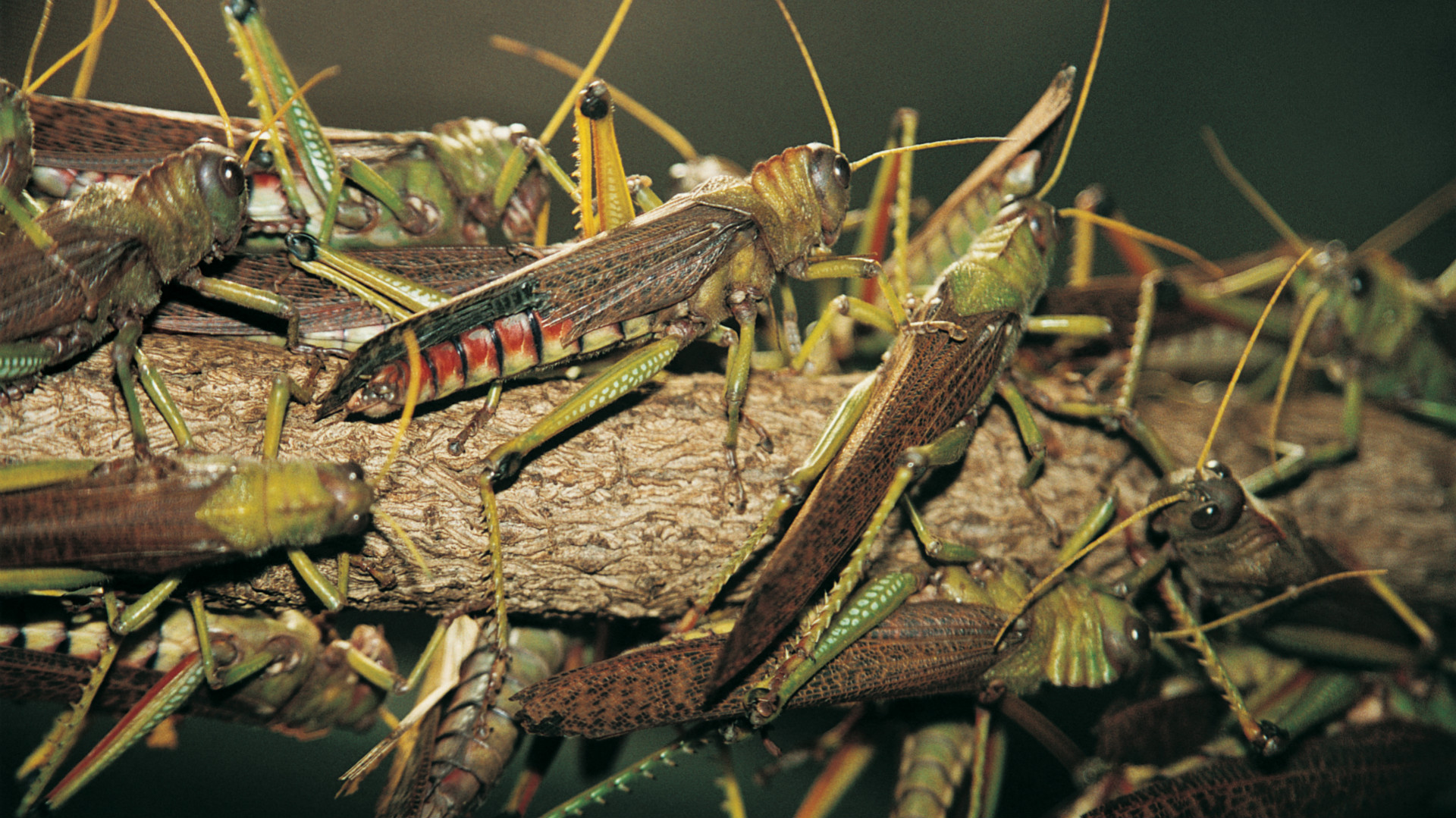A new study may help prevent locusts from gathering in large swarms that cause widespread damage to crops.
A research team, led by the Institute of Zoology under the Chinese Academy of Sciences, has found that a smelly compound emitted by locusts can attract the insects in the wild, forming a giant cluster

According to the study, a compound called 4VA, is an aggregation pheromone that is responsible for the swarm behavior. It can be triggered by aggregation of four to five locusts, and its production increases with the population density. What’ s more, both gregarious and solitary locusts are strongly attracted to 4VA, regardless of age and sex.
Upon further testing, they found the compound could be sensed by a receptor. That means the insects became incapable of responding to the compound without the typical receptor.
Lead researcher Kang Le said the aggregation pheromone was a hard-earned discovery. " Therefore, his team has undertaken a huge amount of tests to find the receptor that matches the compound 4VA,"

"This finding is exciting because it indicates that a locust can be engineered to be immune to the effects of the pheromone," scientist Leslie Vosshall, also a member of the U.S. National Academy of Sciences said.
Many countries around the world are suffering severe locust plagues this year. Current methods can work but at the cost of damaging the environment. The discovery may inspire scientists to use locust compounds to combat this threat. According to scientists, possible control measures include laying pheromone traps to lure locusts, and using gene-editing technologies to prevent locusts from sensing 4VA, thus preventing swarms.
(All images from VCG)
(If you want to contribute and have specific expertise, please contact us at nature@cgtn.com.)
Source(s): People's Daily